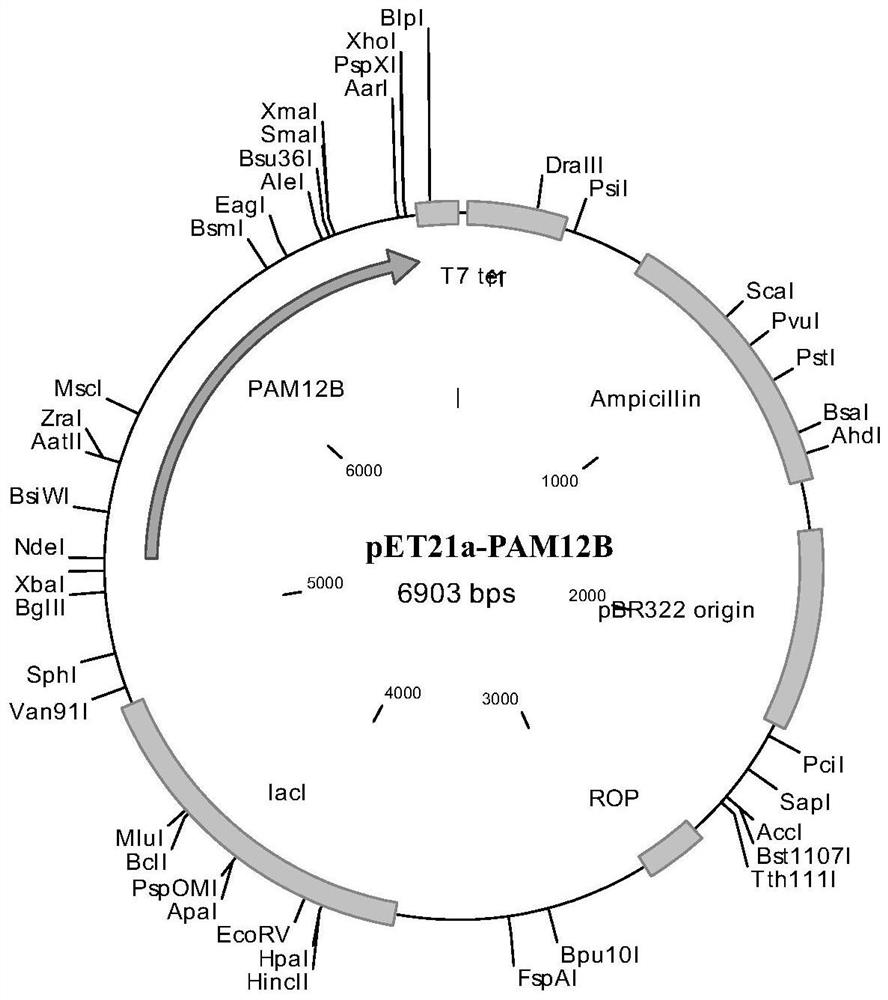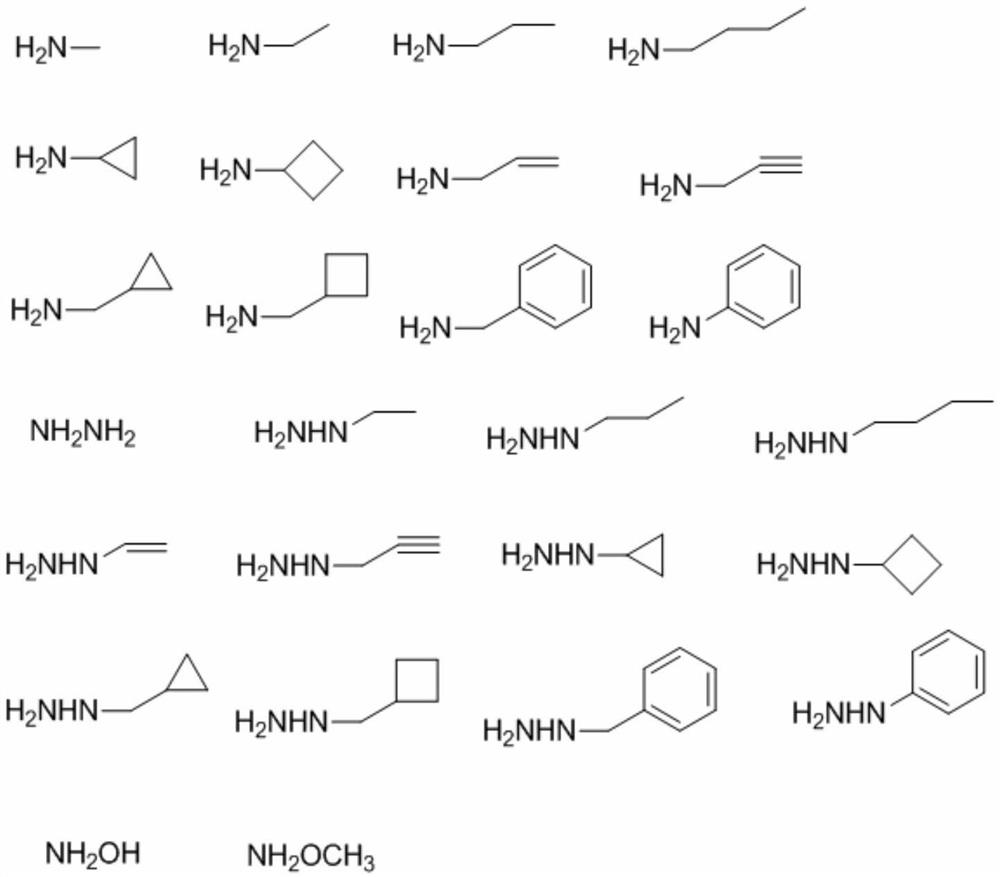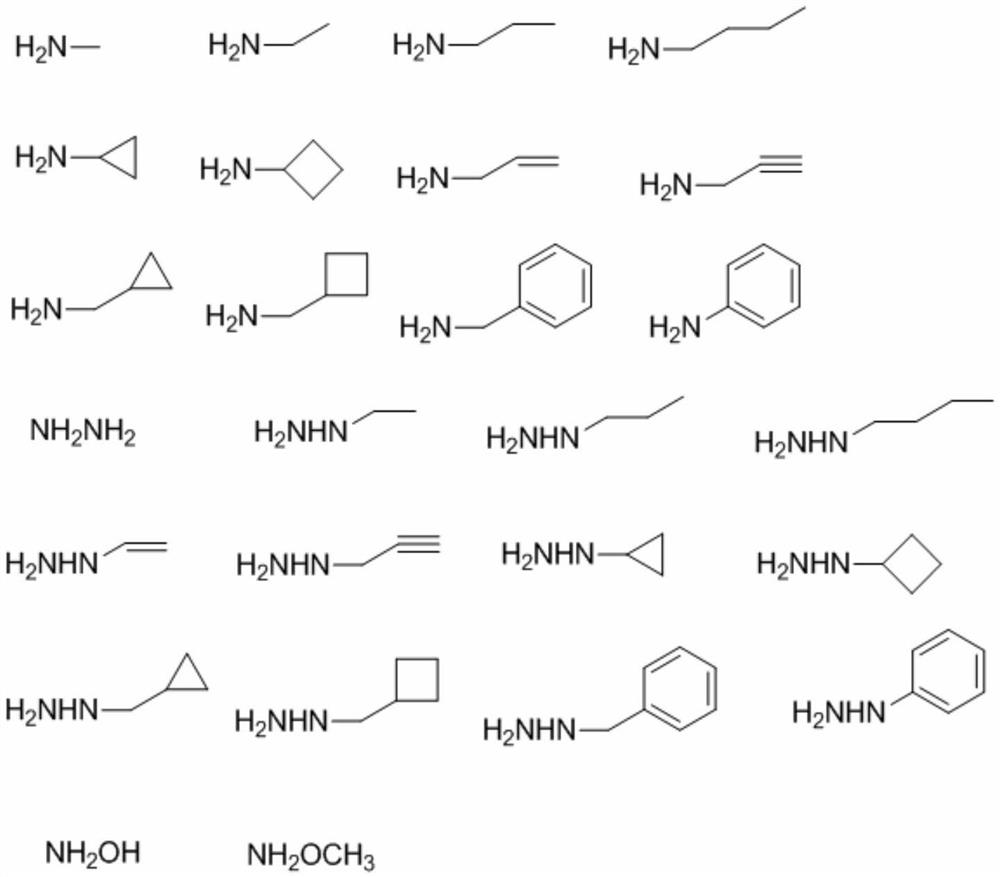A method for enzyme-catalyzed selective amidation and hydrazide modification of polypeptide C-terminus
A C-terminal and hydrazide technology, which is applied in the field of enzyme-catalyzed selective amidation and hydrazide modification of polypeptide C-terminus, can solve the problems of low yield, high difficulty, and many chemical modification steps, and achieve substrate spectrum Broad, mild effect
- Summary
- Abstract
- Description
- Claims
- Application Information
AI Technical Summary
Problems solved by technology
Method used
Image
Examples
Embodiment 1
[0034] Example 1. Enzyme-catalyzed selective amidation and hydrazide modification of polypeptide C-terminus
[0035] In this example, the amino acid at position 1 of the C-terminus of the polypeptide is selectively amidated and hydrazidated using the polypeptide terminal amidation enzyme (PAM12B) shown in SEQ ID No.1.
[0036] Reaction process: The C-terminally amidated polypeptide to be modified is catalyzed by PAM12B shown in SEQ ID No.1 and nucleophilic organic amine (NH 2 R) reaction, thereby realizing the amidation and hydrazide modification of the C-terminal amino acid of the polypeptide to be modified.
[0037] Wherein, the general formula of the nucleophilic organic amine with the modifying group is NH 2 R can specifically be any of the following:
[0038]
[0039] 1. Preparation of polypeptide terminal amidation enzyme (PAM12B)
[0040] Adopt the double-stranded DNA molecule shown in SEQ ID No.2 (the coded gene of polypeptide end amidating enzyme PAM12B shown in...
PUM
 Login to View More
Login to View More Abstract
Description
Claims
Application Information
 Login to View More
Login to View More - R&D
- Intellectual Property
- Life Sciences
- Materials
- Tech Scout
- Unparalleled Data Quality
- Higher Quality Content
- 60% Fewer Hallucinations
Browse by: Latest US Patents, China's latest patents, Technical Efficacy Thesaurus, Application Domain, Technology Topic, Popular Technical Reports.
© 2025 PatSnap. All rights reserved.Legal|Privacy policy|Modern Slavery Act Transparency Statement|Sitemap|About US| Contact US: help@patsnap.com



